What is Reverse Osmosis and Do You Need It at Home?

Shop Our Products
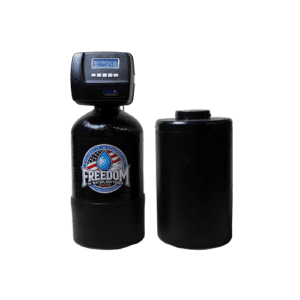
Freedom RV Water Softener System
Specifically for RV and fifth-wheel owners, this high-quality system guarantees your RV’s water is pure,
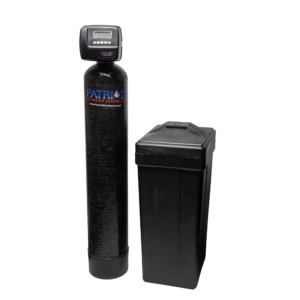
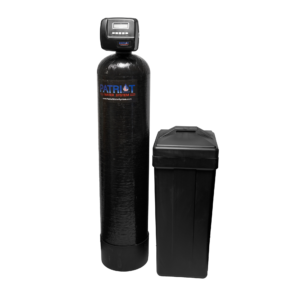
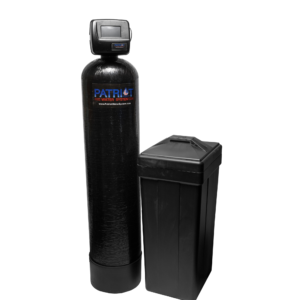
For many homeowners, reverse osmosis offers a reliable way to remove hard water. Whether your water has a strange taste, unpleasant odor, or contains harmful contaminants, an RO system can provide purified, great-tasting water that’s safer for drinking and cooking.
What is Reverse Osmosis?
Reverse osmosis, or RO, is the opposite of this osmosis. Instead of water flowing naturally, pressure is applied to push water through a semipermeable membrane. This removes dissolved solids, contaminants, and impurities, leaving clean, filtered water on one side and waste (known as brine) on the other.
Osmosis is a natural process where water moves through a semipermeable membrane from an area with fewer dissolved substances (like salts) to an area with more. It happens naturally in plants, animals, and even your body to balance concentrations of substances like water and nutrients.
How Does Reverse Osmosis Work?
Reverse osmosis is a straightforward and highly effective water purification process. It begins with feed water (unfiltered water) being forced through a semipermeable membrane using pressure. This membrane acts as a barrier, allowing only water molecules to pass through while trapping impurities like dissolved salts, heavy metals, and contaminants.
The purified water that makes it through the membrane is called permeate water, which is safe for drinking and cooking. The contaminants that are left behind are flushed away as brine (or waste water). This process makes sure that your household gets clean, great-tasting water while reducing harmful and unpleasant substances.
Stages of RO Systems
Reverse osmosis systems purify water through 3, 4, or 5 stages of filtration. Each additional stage enhances the system’s ability to remove contaminants and improve water quality.
Any reverse osmosis system will have the same 3 first stages
- Sediment Filter: Removes dirt, rust, and larger particles from the water.
- Carbon Filter: Reduces chlorine, odors, and organic chemicals that affect taste and smell.
- Semipermeable Membrane: Filters out contaminants like TDS (Total Dissolved Solids), heavy metals, and other impurities.
- 4-stage systems, like our Reverse Osmosis Drinking System, include a Polishing Filter (Post-Carbon Filter), which further refines the water by removing any remaining tastes or odors that passed through the earlier stages.
- 5-stage systems have an additional Carbon Filter to trap even more impurities.
Types of RO Cartridges
When choosing a reverse osmosis system, you’ll also need to consider the type of filter cartridges it uses. Here are the two main types
Quick Change Cartridge
- Overview: These cartridges are designed for convenience and can be swapped out without needing tools or shutting off the water supply.
- Benefits: Easy to install and replace, saving time and hassle.
- Considerations: Often more expensive than standard cartridges.
Drop-In and Standard Cartridge
- Overview: These are traditional cartridges that fit into a housing unit. Replacing them involves opening the housing, removing the old filter, and inserting the new one.
- Benefits: Cost-effective and widely available.
- Considerations: Requires more effort to replace and may involve spilling water during the process.
How Long Do Reverse Osmosis Systems Last?
The lifespan of a reverse osmosis system depends on proper maintenance and regular replacement of components.
Filters typically need to be replaced every 6 months to 1 year, depending on water quality and usage. Post-filters usually last about 1 year.
The semipermeable membrane generally lasts 2 to 5 years. This varies based on water quality (e.g., high TDS levels may wear out the membrane faster).
With proper care, the overall system can last 10-15 years. Ensuring regular maintenance and replacing worn parts is key to its longevity.
Pro Tip: Keep an eye on water pressure and flow rate. A noticeable drop could indicate the filters or membrane need replacing.
Do I Need a Reverse Osmosis Drinking System?
If you’re wondering whether a reverse osmosis (RO) drinking system is right for your home, it depends on your water quality and your family’s needs. These systems are ideal for homeowners who want cleaner, safer water for drinking, cooking, and even making coffee.
Learn more – 6 Tips on Choosing a Water Softener
Let’s dive into the benefits of RO systems and what contaminants they can remove.
Benefits of Reverse Osmosis Water Filtration
Reverse osmosis systems offer a wide range of benefits, making them one of the most effective solutions for home water filtration:
- Removes 95-99% of Contaminants
- Improves Water Taste and Odor
- Fully Automated Process: Once installed, RO systems work automatically. They fill your storage tank with purified water without requiring constant attention, making them hassle-free for busy households.
- No Electricity Required: RO systems are powered by water pressure, making them energy-efficient and reliable even during power outages.
- Cost Savings: Over time, an RO system can save you money compared to buying bottled water or paying for water delivery services.
- Easy Installation: Many RO systems are designed to be homeowner-friendly, with simple setup instructions. Most systems can be installed under a sink in just a few hours.
What Does Reverse Osmosis Remove?
Reverse osmosis systems remove a wide variety of contaminants, making them one of the most versatile filtration systems available. Here’s a clear list of what RO systems can eliminate from your water
- Fluoride: Found in municipal water supplies, RO removes excess fluoride for better taste and safety.
- Salt: Filters out dissolved salts that can make water taste unpleasant.
- Sediment: Captures dirt, rust, and other particles that cloud your water.
- Chlorine: Reduces the chemical taste and smell often associated with tap water.
- Arsenic: Effectively removes arsenic V, a dangerous contaminant found in some water sources.
- VOCs (Volatile Organic Compounds): Removes chemicals like benzene and formaldehyde that can leach into water.
- PFAS: Filters out “forever chemicals” linked to health risks.
- Microplastics: Captures tiny plastic particles that may end up in drinking water.
- Herbicides and Pesticides: Eliminates harmful agricultural runoff contaminants.
- Heavy Metals: Removes lead, mercury, and other toxic metals that may be present in your water supply.
Reverse osmosis systems provide peace of mind, giving your family access to water that’s free of harmful substances.
FAQ
Does Reverse Osmosis Waste Water?
Reverse osmosis systems do produce some waste water because contaminants are flushed out as brine. Older systems may have a waste-to-purified water ratio of 4:1, but modern systems are much more efficient, with ratios as low as 1:1. If water conservation is a concern, look for high-efficiency models that minimize waste.
Is It Safe to Drink Reverse Osmosis Water?
Yes, RO water is safe to drink because it removes harmful contaminants like heavy metals and pesticides. However, it also removes beneficial minerals like calcium and magnesium, which some people prefer in their water. For those concerned, remineralization filters can add healthy minerals back into the water to improve taste and nutritional value.
What Is the Disadvantage of Reverse Osmosis Water?
The main drawbacks of RO water are water waste, the removal of some beneficial minerals, and regular maintenance requirements. Older systems waste more water, but newer models are much more efficient. Demineralization is easily addressed with an optional remineralization filter.
What Does a Reverse Osmosis System Do?
A reverse osmosis system removes impurities, contaminants, and dissolved solids from water, leaving it clean and safe to drink. It works by forcing water through a semipermeable membrane that filters out harmful substances like heavy metals, chlorine, and pesticides. The result is purified, great-tasting water for your household.
Is It Worth Getting a Reverse Osmosis System?
RO systems are worth it if you want cleaner, safer water for drinking and cooking. They improve water taste, reduce contaminants, and save money over time compared to bottled water. For homes with poor water quality, an RO system is a practical and cost-effective solution.
Share:
Talk to A Water Quality Expert
Shop Our Products

Freedom RV Water Softener System
Specifically for RV and fifth-wheel owners, this high-quality system guarantees your RV’s water is pure,



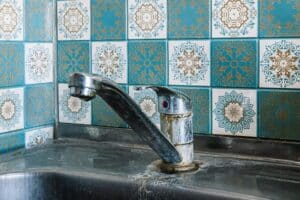
What is Hard Water?
Hard water contains high levels of minerals, primarily calcium and magnesium, which can cause scale buildup in pipes and appliances, reduce soap efficiency, and dry out skin and hair. Recognizing hard water issues and using a water softener can help mitigate these problems.
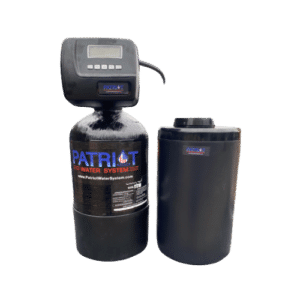
6 Things High Quality RV Water Softeners Always Have
A high-quality RV water softener should be compact, durable, easy to install and regenerate, compatible with RV plumbing systems, and highly efficient. This guide covers the essential features to look for when choosing the best portable water softener for your RV.

6 Tips on How to Choose A Water Softener
To choose the right water softener, consider your household size, water usage, water hardness, regeneration method, salt-based vs. salt-free systems, installation, and maintenance needs.
Join Our
Newsletter
Get the latest information, and exclusive offers on water softening and purity solutions
